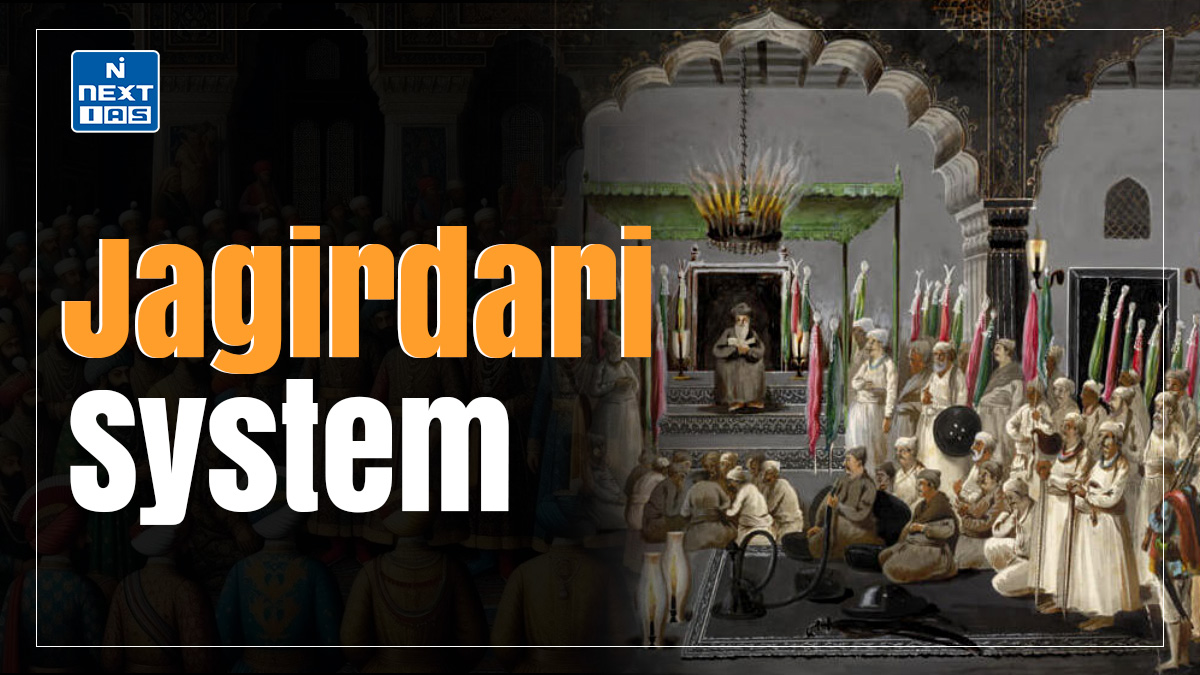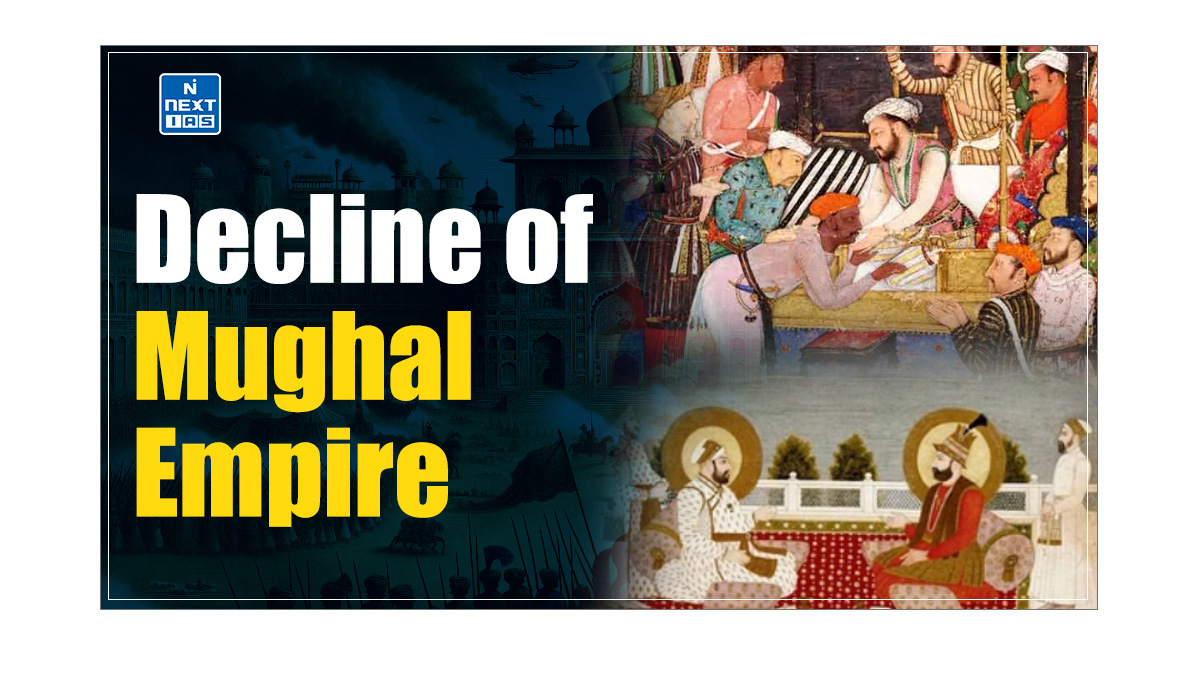
Feudalism in India refers to a decentralised political and socio-economic system in which power was distributed among local rulers and landlords based primarily on land ownership. This system significantly shaped India’s medieval economy, social hierarchy, and political landscape, influencing the governance structure for centuries. This article aims to study in detail the origins, features, and impact of feudalism in India, along with its decline and lasting legacy.
What is Feudalism?
- Feudalism was a combination of legal and military systems in medieval Europe that largely flourished between the 9th and 15th centuries A.D.
- In this system, Kings granted land to nobles, who further granted it to their vassals (holders of land on conditions of homage and allegiance) in return for military and other services on demand.
- A similar system evolved in the early medieval period in the Indian subcontinent, where the weaker kings compensated through land grants rather than paying in currency.
- However, Indian feudalism was quite different from the European feudalism structure, and historians view it as an altogether distinct system.
Feudalism in India
- Feudalism began in India with the advent of the early medieval period when the villages became economically self-sufficient due to a decline in urban centres and commercial activities during the end of the Gupta period.
- During the 1st Century AD, the kings began to donate land free of cost to the Brahmins (called Brahmadeya), scholars, and other religious institutions, thus conferring ownership of the land and, hence, the right to collect revenues.
- The practice of making land grants to the Brahmanas was a custom sanctified by the injunctions in the Dharmashastras, Epics, and Puranas.
- The Anusasana Parva of the Mahabharata devotes a whole chapter to the praise of making gifts of land (Bhumidana Prasamsa). This enabled them to make a direct link and control over the peasantry.
- With the growth of feudalism, community rights on land diminished. Monarchs gave pastures, marshes, and forests as gifts. Thus, a middle-order landowner class emerged, and the peasants lost their land rights.
- They were forced to pay heavy taxes and do forced labour. Their status was reduced to slaves. There was the possibility of further land transfers, and that happened, too.
- Along with the transfer of revenue rights, the system also resulted in the transfer of administrative rights to the Brahmins, particularly. This resulted in the mushrooming of Brahmin feudatories.
- Also, ceding the revenue and administrative powers resulted in the disintegration of the state and the weakening of the King’s power.
Features of Feudalism in India
The features of Indian feudalism can be summarised as:
- Political Decentralization: The decentralisation achieved through land grants gradually became a distinctly branched political organisation comprising semi-autonomous rulers such as Samantas and Mahasamantas.
- Emergence of New Class: Feudalism resulted in the emergence of landholding intermediaries, who became a dominant social group.
- This group was absent in the early historical period and was linked to the practice of land grants, which began with the Satavahanas.
- Changes in Agrarian structure: With the growth of feudalism, from the sixth Century AD onwards, the peasants stuck to the land granted to the beneficiaries.
- This led to the population’s immobility and, therefore, isolation from the rest of the world. Its profound implication was the development of localised customs, languages, and rituals.
Changes in Land Grants
- From the period of later Mauryas, land grants included the transfer of all revenue sources and the surrender of police and administrative functions.
- The grants of the second century AD mention the king’s transfer of control only over salt, which implies that he retained certain other sources of revenue.
- However, in some other grants, it was recorded that the donor (King) gave up his control over almost all sources of revenue, including pastures, mines, hidden treasures, and deposits.
- The donor then abandoned not only his revenues but also the right to govern the inhabitants of the villages that were granted. This practice became more prevalent in the Gupta period.
- Many grants of apparently settled villages were made to the Brahmanas during the Gupta era.
- In such grants, the residents, including the cultivators and artisans, were expressly asked by their respective rulers to pay the customary taxes to the donees and obey their commands.
- All this provides clear evidence of the surrender of the administrative power of the state.
- One of the important aspects of the Kings’ sovereignty was that he used to retain the right of punishing the culprits.
- In post-Gupta times, the king surrendered to the Brahmanas not only this right but also his right to punish all offences against family, property, person, etc.
Feudalism during Key Periods in Indian History
Gupta and Post-Gupta Period
- The Gupta Empire laid the foundation for feudal practices through land grants.
- This practice continued and expanded during the post-Gupta period (6th–8th centuries), where kings increasingly depended on local rulers for administration and military service, creating the conditions for feudalism.
Rajput Period (8th–12th Century)
- During the Rajput era, the feudal system became more entrenched. The warrior class Rajputs controlled large estates, and their loyalty was secured through land grants.
- The Rajput kings often relied on vassals (samantas) to maintain law and order, further decentralising political authority.
Delhi Sultanate and Mughal Period
- Feudalism continued during the Delhi Sultanate (13th–15th centuries), where the Iqta system closely resembled feudal practices.
- In this system, the sultans granted land to military commanders (iqtadars) in return for military service.
- Similarly, under the Mughal Empire (16th–18th centuries), the Mansabdari System displayed feudal elements.
- Mansabdars were granted jagirs (land) based on their military rank and were responsible for collecting taxes and maintaining soldiers for the emperor.
South Indian Feudalism (Nayaka System)
- In South India, the Nayaka system during the Vijayanagara Empire (14th–17th centuries) mirrored the feudal structure.
- Nayakas were local rulers or military commanders who were granted land in exchange for military service and administrative duties.
Social and Economic Impact of Feudalism in India
Social Stratification
- Feudalism reinforced the rigid social hierarchy of Indian society. The land-owning elites (Kshatriyas and Brahmins) held significant power, while obligations to the feudal lords bound the peasantry and lower castes.
- Social mobility was limited, and the caste system became more deeply entrenched under feudalism.
Agricultural Economy
- The economy under feudalism was primarily agrarian.
- Peasants worked on the lands of the feudal lords and were often required to pay a substantial portion of their produce as rent.
- The self-sustaining nature of local estates and the limited role of trade in certain periods stunted economic growth.
Local Autonomy and Fragmentation
- While feudal lords enjoyed local autonomy, this also led to political fragmentation and the weakening of centralised authority.
- The division of power among numerous regional rulers often resulted in conflict, weakening the overall structure of governance.
Decline of Feudalism in India
Rise of Centralized Empires
- The consolidation of power by empires such as the Mughals led to a decline in feudal autonomy.
- Systems like the Mansabdari directly controlled local rulers, curbing their independence and integrating them into a centralised administrative framework.
British Colonial Policies
- The British Colonisation of India in the 18th and 19th centuries drastically altered the feudal system. British land revenue policies, such as the Permanent Settlement (which created a new class of zamindars) and the Ryotwari System, disrupted traditional feudal relationships.
- The zamindars’ role changed to mere tax collectors, eroding the local feudal structure.
Peasant Revolts
- Increased exploitation of peasants by zamindars and local rulers during the colonial period led to Peasant Revolts and uprisings.
- These revolts weakened the feudal lords’ hold on power, contributing to the system’s decline.
Conclusion
Feudalism in India was crucial in shaping medieval society, governance, and the economy. While it fostered regional autonomy and localised power, it also led to significant social inequalities and political fragmentation. Understanding the feudal system is essential to comprehend the evolution of Indian history, from the Gupta period through the Mughal Empire and into the colonial era. Feudalism’s legacy continues to impact India’s socio-political structures even today.
Frequently Asked Questions (FAQs)
What is Feudal System in India?
The feudal system in India refers to a social and economic structure that emerged during the medieval period, characterized by a hierarchy of landownership and obligations. It involved a system of lords who owned large tracts of land and vassals or peasants who worked on these lands in exchange for protection and a portion of the produce.
Write the basic features of feudalism in India.
Some basic features of feudalism in India:
– Land Ownership
– Hierarchy
– Serfdom
– Local Governance
– Economic Dependency
What is Feudalism?
Feudalism is a social, economic, and political system that arose in medieval Europe and other regions, characterized by the exchange of land for military service and loyalty between lords and vassals, alongside a hierarchy of obligations among different social classes.






